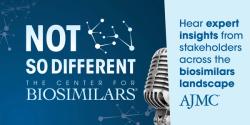© 2025 MJH Life Sciences™ and The Center for Biosimilars - Biosimilars, Health Economics & Insights. All rights reserved.
Rising Biosimilar Adoption for an Italian Payer Will Benefit National Health Care System, Patients
Data from 2021 and 2022 indicates increasing biosimilar use in an Italian health care company, with potential for full adoption in the future, benefiting both the National Health System and citizens through efficient and sustainable health care policies.
Data from 2021 and 2022 showed that biosimilar use within an Italian health care company was on the rise, suggesting that the country could achieve total utilization in the coming years. The researchers touted the growing success, saying that more use will benefit the National Health System (NHS) and citizens who rely on an efficient and sustainable health care policy.
High production costs associated with biologics have posed concerns about the sustainability of health care systems globally, with biosimilars being presented as cost-effective alternatives priced at about 20% to 30% less than reference agents. Increased utilization of biosimilars could reduce biologic prices even more. Tender systems, which Italy uses, allow for greater biosimilar utilization and price reductions by allowing biosimilars and reference products to compete on pricing in hopes of being granted a contract with the region’s public health plan.
“The advent of biosimilar drugs represents a transformative milestone in the landscape of therapeutic biologics, offering a promising avenue for better access to care for patients and potential economic benefits for health care systems worldwide,” the authors wrote.
The present study compared dosing unit quantity and financial expenditure between originator and biosimilar products in an Italian health care facility serving around 1.1 million people, aiming to identify cost-saving opportunities. The researchers said they hope their results will inform pharmaceutical selection and resource allocation in the local health care system.
The Local Health Authority Napoli 3 South includes 5 hospitals and 10 health districts, with one of the highest population densities in Italy of 1737 inhabitants per square kilometer. The assessment included prescriptions distributed through private pharmacies working with the NHS and those dispensed at corporate health care facilities.
The authors utilized the Anatomical, Therapeutic and Chemical (ATC) classification system to select drugs of interest. Consumption, expenditure, and patient numbers were extracted from the company's databases. A comparison was then made with 2021 to assess the increase in biosimilar drug usage in 2022.
In 2022, the analysis showed that while most drug classes within the company's territory still preferred originator drugs, some showed a shift toward biosimilar usage. Notably, insulins largely favored originators, with only minor usage of biosimilars observed (insulin lispro, 100.0% vs 0.0%; insulin aspart, 99.3% vs 0.7%; insulin glargine, 83.4% vs. 16.6%). However, drugs like enoxaparin and erythropoietin had mostly transitioned to biosimilars (enoxaparin, 99.2%; erythropoietin, 98.8%). High biosimilar utilization was seen in trastuzumab (98.4%), filgrastim (99.8%), and pegfilgrastim (98.4%), with 100% utilization regarding rituximab and bevacizumab. Drugs like etanercept and adalimumab had room for increased biosimilar usage (73.3% and 73.8%, respectively). Infliximab, particularly for chronic diseases, showed a preference for biosimilars at 96.0%. These data indicate a widespread trend toward biosimilar usage compared with originators (86.8% vs 13.2%).
The analysis revealed an overall balance in expenditure between originator and biosimilar drugs, with significant opportunities for cost recovery identified in specific drug classes like insulin glargine, somatropin, etanercept, and adalimumab. Although biosimilar drugs were prioritized over originators, spending did not reflect this trend, with comparable expenditure on both types (53.1% for biosimilars and 46.9% for originators) out of a total expenditure of €11,026,545.62 ($11,975,379.87).
The number of patients treated with biosimilar drugs was 3 times higher than those treated with originator drugs, except for certain drugs like insulins, etanercept, adalimumab, follitropin, and somatropin. This trend indicates a future trajectory favoring biosimilars, with increasing prospects for cost savings. While some drugs maintained similar usage rates from 2021 to 2022, others showed significant increases in biosimilar usage in 2022, signaling a positive trend towards lower-cost drugs.
The authors concluded that the results are “encouraging, especially for those medicinal specialties that still show a significant consumption of higher-cost drugs. It is crucial to consider that continuous data monitoring, along with ongoing efforts to raise awareness among prescribing clinicians, can lead to an increasing and exclusive use of lower-cost drugs in the coming years. These drugs ensure both the efficacy and safety of treatments and the sustainability of the entire [NHS].”
Reference
Ferrara F, Capuzzo M, Langella R, Trama U, Nava E, Zovi A. The use of the biosimilar drug can lead to large health care savings that can be reinvested for continued innovation: Analysis of consumption of an Italian health care company. J Cancer Policy. March 18, 2024. doi:10.1016/j.jcpo.2024.100473



